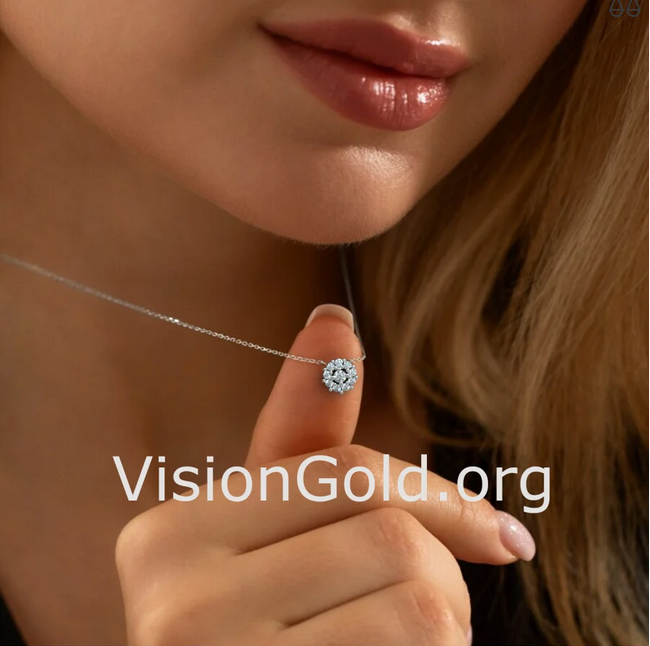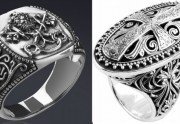Christian jewelry has always held a deep symbolic meaning for believers across the world. Whether it is rings...

Focus!!!: Guide explanations of diamond terminology
In this article we will try to explain to you As simple and detailed as possible Everything around the colors of diamonds-VisionGold®
.
Great attention !!: guide explanations of diamond terminology
Acronyms and abbreviations are part of life in the jewelry industry, but there are times when failure to use the right terminology can lead to confusion for everyone, especially the consumer.

This is something that the world's leading diamond industry recognizes very well - and two years ago they decided to do something about it.
Eight diamond industry organizations, including the Natural Diamond Council, the Jewelry Managers' Council, and the World Diamond Federation Bourses, to name a few, have joined forces as part of a partnership with local organizations such as the National Jewelry Association in the United Kingdom (NAJ). for the creation of the Diamond Terminology Directive.
The world-renowned Diamond Nomenclature document serves as a benchmark for the jewelery trade when referring to diamonds and synthetic diamonds and is based on two internationally accepted standards: ISO 18323 and the CIBJO Diamond Blue.
Using a single page, the Directive is designed to encourage the full, fair and effective use of clear and accessible terminology for diamonds, laboratory diamonds and counterfeit diamonds by all industry, organizations and traders.
Lisa Levinson, Head of Marketing and Communications for the UK at the Natural Diamond Council (NDC), says the collective involvement of large numbers from different parts of the diamond supply chain demonstrates industry recognition that it is time to create a language and a terminology ”to make things easier for consumers.
It summarizes what the Directive states: "A diamond is always a 'natural diamond' and then a synthetic diamond must have the prefix 'synthetic diamonds', 'laboratory diamonds' or 'laboratory diamonds'."
Something completely different, such as a zircon stone or a colorless sapphire, should be referred to as a "diamond simulator" or "imitation diamond". It all has to do with people knowing what they are buying and that they can trust what is right.
"There has been a confusing story in terminology where diamonds and synthetic diamonds are mixed in the minds of consumers. It is very difficult for consumers to know what they are buying. There was everything from vegan diamonds to cultured diamonds and when we did some research on this we found that consumers had no idea these were not natural diamonds.
"For us, if you buy a natural diamond, you are buying a natural diamond. if you buy a synthetic diamond, you are buying a synthetic diamond. Consumers always have the right to choose, but it is to make sure they know what they are choosing. "

NDC includes a selection of the world's largest diamond mining companies, including Alrosa, De Beers, Dominion Diamonds, Lucara Diamond, Petra Diamonds, Murowa Diamonds and Rio Tinto. Formerly known as the Diamond Producers Association, it was not until June of this year that it launched again with a new consumer identity.
The Diamond Terminology guideline is extremely important to the organization and remains particularly enthusiastic about the progress made in the UK, thanks in large part to the work of the NAJ. It has successfully uploaded the terminology document to the "Primary Advice" principle, which is guaranteed and recognized by the commercial standards in the UK market.
We have seen other global markets suffer from a lack of agreed terms for the description of natural diamonds, laboratory diamonds and simulation diamonds. "
The NAJ used the existing Primary Partnership with Buckinghamshire and Surrey Trading Standards to obtain Assured Advice status and strengthen the Diamond Terminology Directive. The result is an agreed document that aligns with a broader protocol and consumer protection legislation, explains NAJ President Gary Wroe.
"We are building an enforcement structure in the UK market that is recognized not only by traders and business models, but also by leading diamond industry groups worldwide. "This is a positive step in streamlining terminology that will further boost consumer confidence in NAJ retailers and protect those who operate honestly."
Assured Advice (terminology) is designed to benefit consumers and protect NAJ members, rather than prosecuting those who do not follow the rules.

Businesses that ignore the Directive could be considered to be violating consumer protection laws if a customer feels they are unsuitable for their needs or has been misled. The document could also be a useful tool in court.
Those who comply with the Transaction Standards Guarantee Tips can be assured that other trading standards and consumer protection bodies will adhere to and recognize the Diamond Terminology Guidelines as accurate, thus protecting them from enforcement risk.
This method of strengthening the diamond terminology guideline is relatively unique in the UK market, highlighting why it has been favorably considered by international diamond organizations.
Wroe adds: "We have seen other global markets suffer from a lack of agreed-upon terms for the description of natural diamonds, laboratory diamonds and simulation diamonds.
"Instead of waiting for this to happen in the United Kingdom, we decided to act quickly and effectively in cooperation with Trading Standards. They immediately took our goals seriously and now we can move forward with clearer and more applicable terminology. "
NDC Levinson agrees that following the advice gives retailers some clear protection. "The United Kingdom has taken a big step forward. It is very positive, of course, for the 10 million people working in the natural diamond industry worldwide and it is very positive for British consumers because it prevents confusion.
"The fact that it is guided by the NAJ and the commercial standards is of paramount importance. In some countries the situation is different. And when consumers do not know what they are buying, the risk is that they do not buy at all. This destroys trust and hurts retailers.
"As a consumer, when you feel empowered with knowledge or information, it makes the decision easier. Jewelry can be a big market, an emotional market. the last thing you want is for a consumer to feel that he does not know what he is buying. "
Responsible jewelers have an innate desire to do the right thing and make things easier for consumers. "
NDC is now working to raise awareness of as many jewelers as possible in the UK and to coordinate efforts with jewelers' associations in international markets to strengthen the message.
Levinson believes that retailers welcome the support that such a framework offers.
"I think they understand that they have to take it seriously because it protects them and it also protects their consumers' loyalty to them. I think responsible jewelers have an innate desire to do the right thing and make things easier for consumers.
"If you take natural diamonds and lab-created diamonds, they are two different products and they both have value, but very different value and very different unique points of sale. Our job at NDC is to share what makes natural diamonds stand out and it is the job of the synthetic diamond maker to share what they do, but the important thing is that we are transparent and open to it. "
Levinson suggests that the United Kingdom could be maintained as a benchmark for how the Directive is implemented worldwide. "The UK has taken a strong stance on this, which is very positive for the whole industry. It's fantastic to see what has been achieved by becoming an Assured Advice. It is a really positive development and it is going to proceed in a way that will benefit everyone. "
Diamond terminology guideline
This Diamond Terminology Directive serves as a reference document for the diamond and jewelery trade when referring to diamonds and synthetic diamonds. It is based on two internationally accepted standards: the ISO 18323 (Jewelry - Consumer Confidence in the Diamond Industry) standard and the CIBJO Diamond Blue book.
Definitions:
• A diamond is a mineral created by nature. "Diamond" always means a natural diamond.
A synthetic diamond is an artificial product that has essentially the same physical characteristics as a diamond.
An imitation diamond, also called a diamond simulator, is an artificial product that mimics the appearance of diamonds without their chemical composition, physical properties or structure.
A gemstone is a mineral of natural origin used in jewelry for reasons of combined beauty, sensitivity and intrinsic value.
Terminology:
• When referring to synthetic diamonds:
Use one of the following authorized qualifying terms when referring to synthetic diamonds: "synthetic", "laboratory developed" or "laboratory created".
Do not use abbreviations such as "laboratory"
Do not use the following terms: "cultured diamonds" and "cultured diamonds" as "cultured" and "cultured" refer exclusively to organic / biogenic products.
Do not use the following terms: "real", "genuine", "precious", "authentic" and "natural", as they apply only to natural minerals and precious stones.
• A diamond is by definition natural. Therefore, use the word "diamond" without identification when referring to a diamond. If differentiation from synthetic diamonds is required, use the term "natural diamonds" as a term of equivalent importance.
• Do not use the following confusing expressions: "natural treated diamonds" and "natural treated diamonds". Instead, simply use "treated diamonds".
Posted in:
Jewelery buying guide
Chat with us on WhatsApp
Call Our Store






















Leave a comment